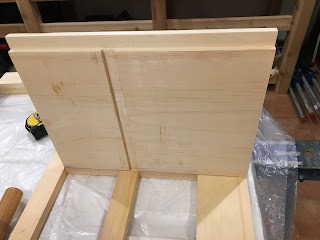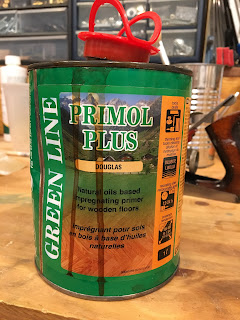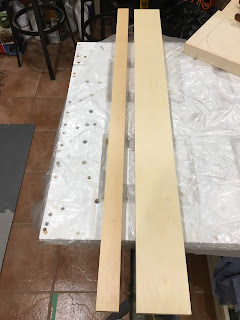First I never made any dovetail before so this was my first try and I was not expecting anything perfect. I have not much problem to saw to a line if I am careful enough so I grabbed some wood offcut and gave it a try.
I used some pine wood for that box, first because I love pine wood and second because I had some left over of the almost exact size I needed. After cutting all pieces to length I started to mark down my tails. I used a sliding bevel and set it to a 1:6 factor and marked the dovetails with a pencil.
I then cut to the line with my saw and cleaned the cut with a chisel. I do not have any pic of all the process as I did not think about it but anyway it is usual enough not to be illustrated.
I used the tails to mark the pins, cut them and clean all the cuts.
Bottom of the box is set in groves cut on each side. The side groves are easy to cut with a plane as they are covered by the pins on the front and back panels. I also cut groves in these panels but using a chisel like for a mortise as they are stopped groves not to show on the side.
I ended with the following assembly:
 |
| Side panels and bottom. |
 |
| Same disassembled |
The top cover is sliding in groves the same way the bottom is set. The end result is the following.
 |
| Almost done! |
I carved a recess on the top of the cover plate so to be able to grab it.
Back to the dovetails... I did not find much more difficult to cut a dovetail than a tenon and mortise. However I did some mistakes. The main was to cut on the wrong side of the waste (shame). I did not mark the waste and was distracted listening to some documentary so the result was immediate, lesson learned.
I finished the box using bees wax and I am pretty happy with the end result.
 |
| A reusable gift packaging... |
 |
| ... made of pine wood, elbow grease and bees wax... |
 |
| ... showing less than perfect dovetails but still! |
This is taking more time than to wrap a gift in a piece of useless cheaply decorated paper but this is reusable, nicer and also this is so much much more fun!


















































